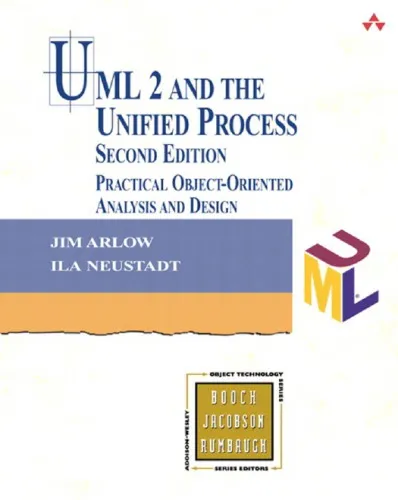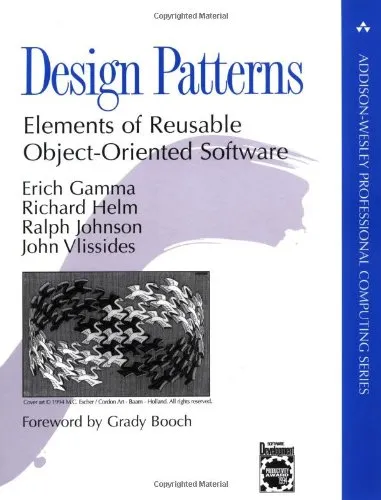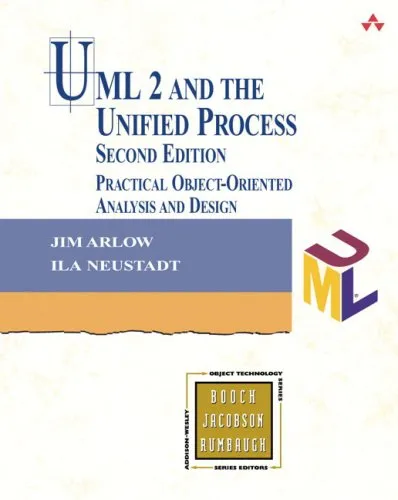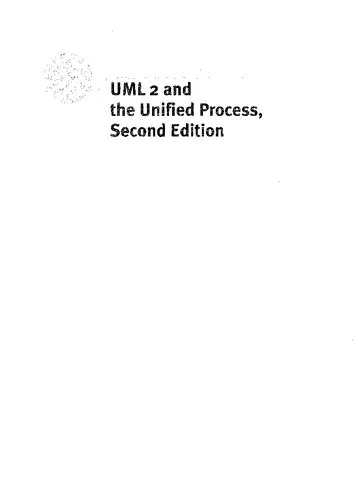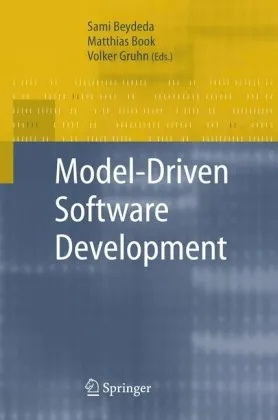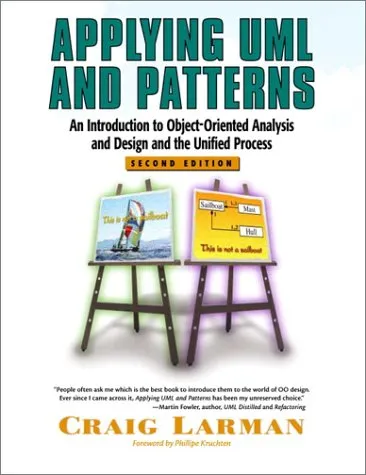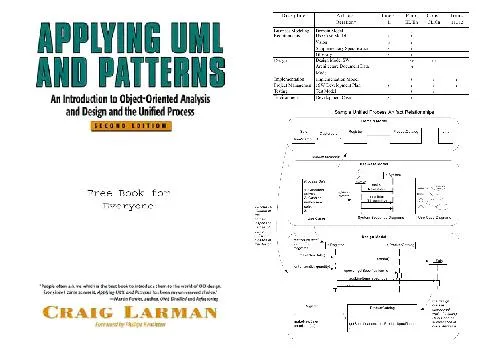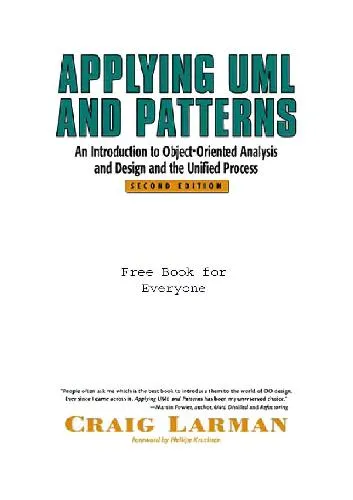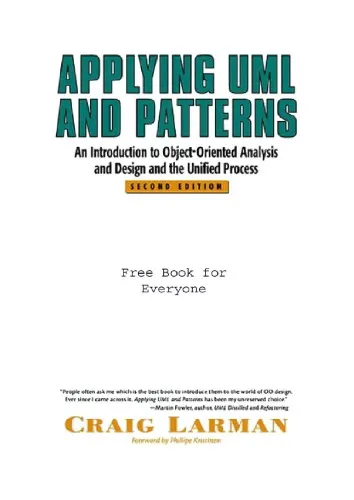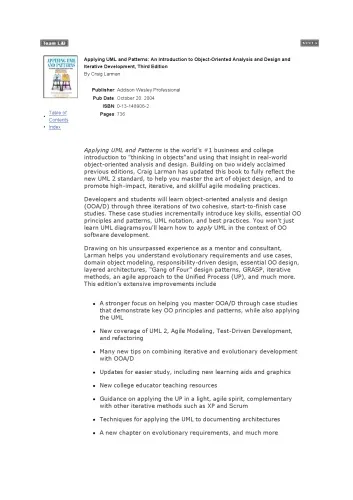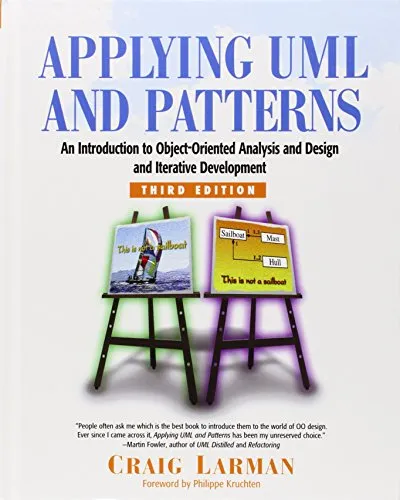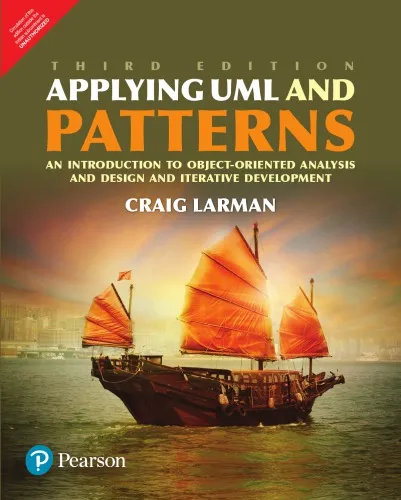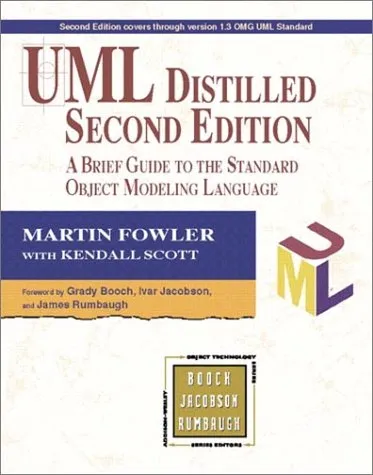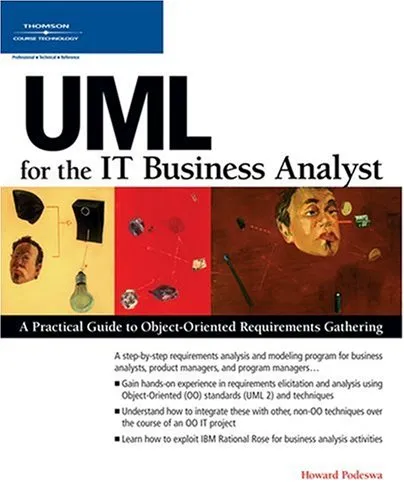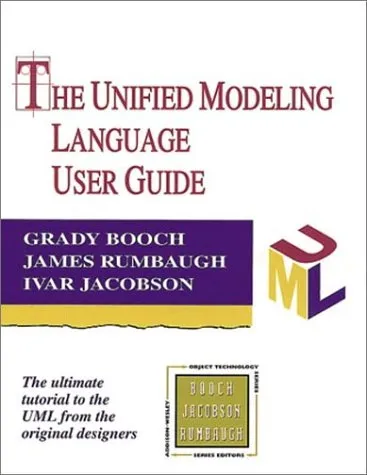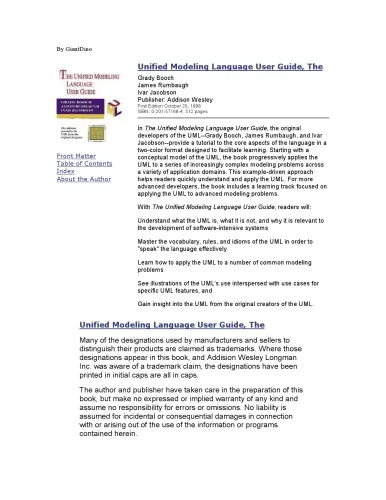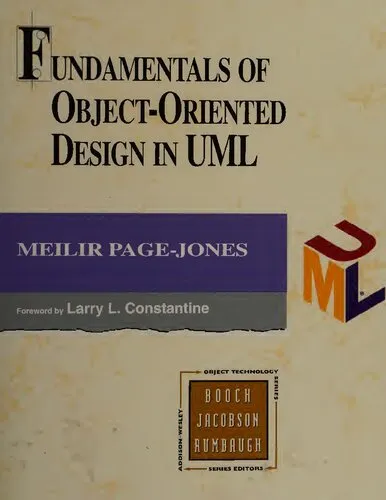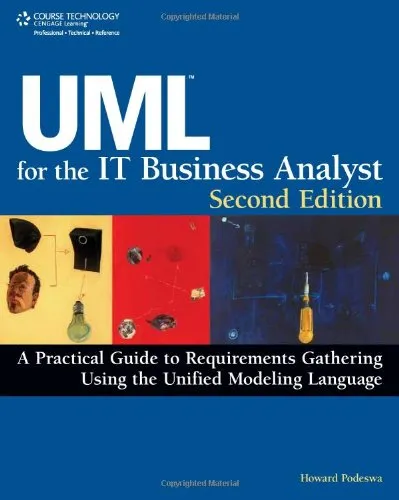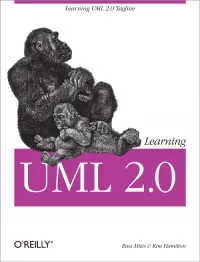UML 2.0 and the unified process: practical object-oriented analysis and design
3.7
بر اساس نظر کاربران

شما میتونید سوالاتتون در باره کتاب رو از هوش مصنوعیش بعد از ورود بپرسید
هر دانلود یا پرسش از هوش مصنوعی 2 امتیاز لازم دارد، برای بدست آوردن امتیاز رایگان، به صفحه ی راهنمای امتیازات سر بزنید و یک سری کار ارزشمند انجام بدینکتاب های مرتبط:
Persian Summary
معرفی کتاب
در کتاب "UML 2.0 and the Unified Process: Practical Object-Oriented Analysis and Design"، نویسندگان "Arlow, Jim" و "Neustadt, Ila" به بررسی و بیان روشهای عملی در تحلیل و طراحی شیءگرا با استفاده از UML 2.0 و فرآیند یکپارچه (Unified Process) میپردازند. این کتاب یک راهنمای جامع است که به خوانندگان کمک میکند تا فناوریهای تحلیل و طراحی نرمافزار را به شکلی مدرن و موثر بهکار بگیرند.
خلاصهای از کتاب
این کتاب شامل توضیحات جامع درباره مدلسازی و طراحی سیستمهای نرمافزاری با استفاده از UML 2.0 است. UML، یا Unified Modeling Language، ابزار قدرتمندی برای مهندسان نرمافزار فراهم میآورد تا به شکل بصری ساختار و رفتار سیستمها را نشان دهند. کتاب با جزئیات دقیق به تشریح نمودارها، شامل Use Case Diagrams، Class Diagrams، Sequence Diagrams و سایر نمودارهای کلیدی مهم میپردازد. همچنین، فرآیند یکپارچه که یک چارچوب معروف برای توسعه نرمافزار است، به طور دقیق تحلیل و کاوش شده است.
نکات کلیدی
- ارائه مثالهای عملی برای درک بهتر مفهوم UML و استفاده از آن در پروژههای واقعی.
- تشریح کامل فرآیند یکپارچه و فازهای آن شامل Inception، Elaboration، Construction و Transition.
- راهنمایی برای طراحی شیءگرا که از مفاهیم انتزاع، کپسولهسازی، وراثت و چندریختی پشتیبانی میکند.
- فنآوریهای پیشرفته در مدلسازی نرمافزار و تأکید بر استفاده از بهترین روشهای مهندسی نرمافزار.
جملات معروف از کتاب
"یک طراحی خوب نه تنها زیباست بلکه عملکردی و قابل درک است."
"مدلسازی به ما فرصت میدهد تا دنیای پیچیده خود را سادهتر ببینیم."
چرا این کتاب مهم است؟
با گسترش روزافزون فناوری و پیچیدگی سیستمهای نرمافزاری، استفاده از روشهای موثر برای تحلیل و طراحی ضروریتر از همیشه شده است. کتاب "UML 2.0 and the Unified Process" با ارائه یک رویکرد سیستماتیک و عملی، به مهندسان نرمافزار کمک میکند تا بر چالشهای موجود در توسعه نرمافزار فائق آیند. این کتاب با ارائه بینشی عمیق به اصول طراحی شیءگرا و استفاده از UML، توانسته است جایگاه ویژهای در میان منابع آموزشی حوزه مهندسی نرمافزار به دست آورد.
Introduction
Welcome to "UML 2.0 and the Unified Process: Practical Object-Oriented Analysis and Design," a comprehensive guide designed to equip you with the essential knowledge and skills needed to master UML 2.0 and apply it within the framework of the Unified Process. This book is an invaluable resource for software developers, architects, and project managers who wish to leverage UML for effective modeling and design in their software projects.
Detailed Summary of the Book
This book delves deeply into the Unified Modeling Language (UML) version 2.0, which has become the standard for visualizing, specifying, constructing, and documenting the artifacts of a software system. Through a practical approach, it helps readers understand the nuances of object-oriented analysis and design, opening doors to more efficient and manageable software development practices.
The book begins by laying a solid foundation in the core concepts of UML 2.0, exploring its syntax and semantics. It then integrates these technical aspects with the Unified Process, guiding readers through the iterative and incremental methodologies that form the backbone of modern software development. Throughout the book, various case studies and practical examples illustrate the application of theoretical concepts, ensuring that readers can effectively translate knowledge into practice.
Key Takeaways
- Gain a thorough understanding of UML 2.0 and its application in real-world scenarios.
- Learn how to implement object-oriented analysis and design principles within the context of the Unified Process.
- Develop the ability to create clear and effective models that communicate software requirements and design decisions.
- Get insights into best practices for iterative software development and how to manage complexity in large projects.
Famous Quotes from the Book
"The power of UML lies not just in its ability to communicate design, but in its capacity to illuminate and simplify the often complex realities of software development."
"In the dynamic world of software, adaptability is key. UML 2.0 provides the tools needed to embrace change and stay agile in the face of evolving requirements."
Why This Book Matters
This book serves as a crucial asset to anyone involved in software development and design due to its practical approach and in-depth coverage of UML 2.0. It stands out by seamlessly integrating UML with the Unified Process, offering a structured path through the often complex software development lifecycle. Its practical emphasis goes beyond mere theoretical knowledge, enabling professionals to elevate their design and architecture practices, resulting in more robust and sustainable software systems.
As software systems grow in complexity and scope, the need for effective modeling techniques becomes even more essential. "UML 2.0 and the Unified Process: Practical Object-Oriented Analysis and Design" not only teaches the technical skills necessary to create these models but also fosters the critical thinking required to apply them effectively. By focusing on real-world application, this book ensures that readers are not just passive learners but capable architects ready to tackle the challenges of modern software development.
دانلود رایگان مستقیم
شما میتونید سوالاتتون در باره کتاب رو از هوش مصنوعیش بعد از ورود بپرسید
دسترسی به کتابها از طریق پلتفرمهای قانونی و کتابخانههای عمومی نه تنها از حقوق نویسندگان و ناشران حمایت میکند، بلکه به پایداری فرهنگ کتابخوانی نیز کمک میرساند. پیش از دانلود، لحظهای به بررسی این گزینهها فکر کنید.
این کتاب رو در پلتفرم های دیگه ببینید
WorldCat به شما کمک میکنه تا کتاب ها رو در کتابخانه های سراسر دنیا پیدا کنید
امتیازها، نظرات تخصصی و صحبت ها درباره کتاب را در Goodreads ببینید
کتابهای کمیاب یا دست دوم را در AbeBooks پیدا کنید و بخرید
سوالات پرسیده شده از این کتاب
1623
بازدید3.7
امتیاز0
نظر98%
رضایتنظرات:
3.7
بر اساس 0 نظر کاربران
Questions & Answers
Ask questions about this book or help others by answering
No questions yet. Be the first to ask!
